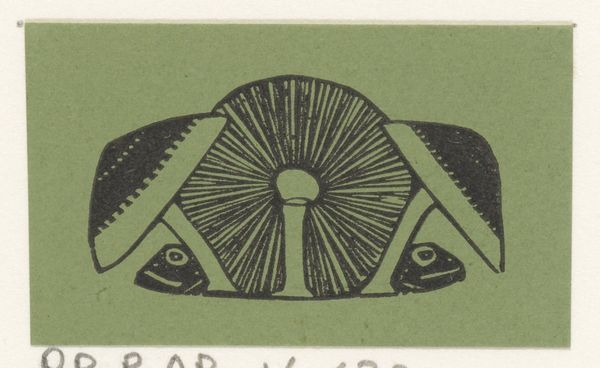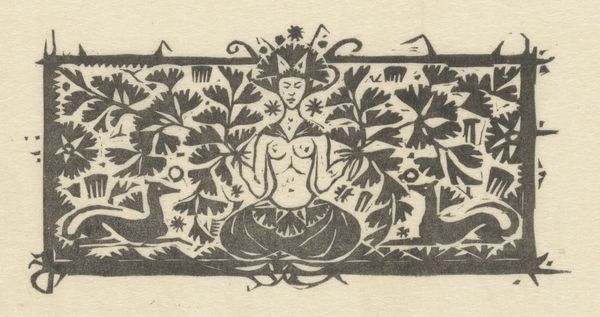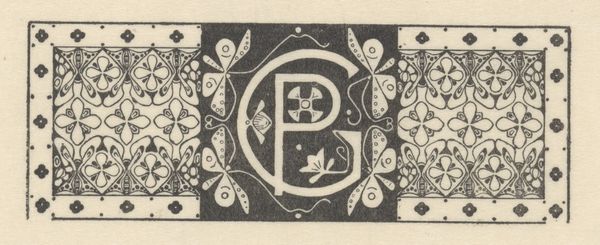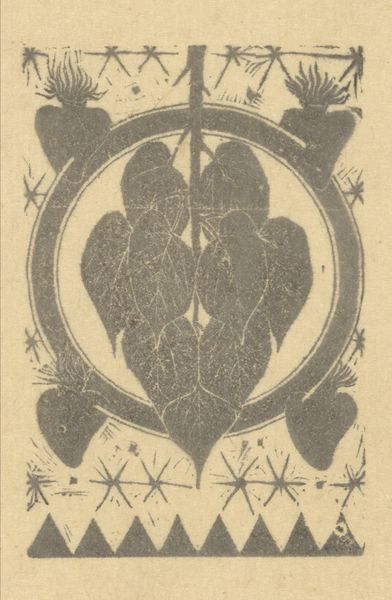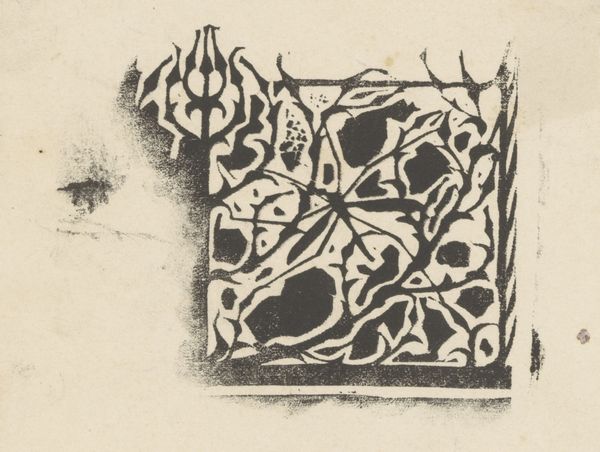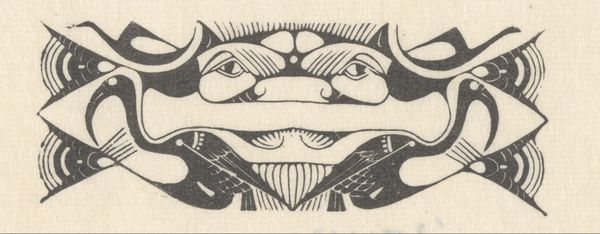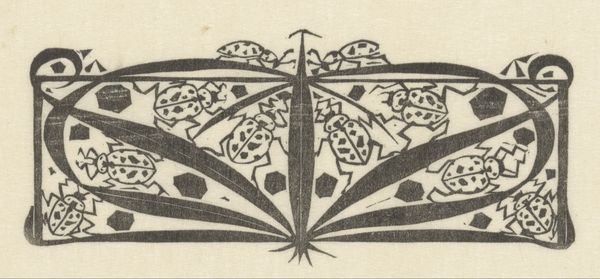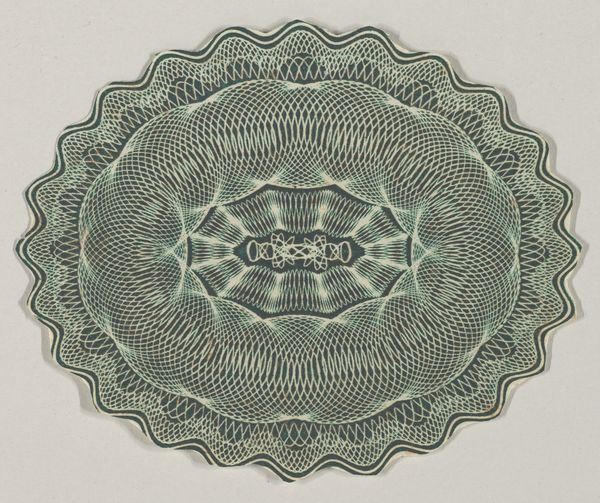
drawing, graphic-art, print
#
portrait
#
drawing
#
graphic-art
#
art-nouveau
#
face
# print
#
geometric
#
symbolism
Dimensions: height 30 mm, width 31 mm
Copyright: Rijks Museum: Open Domain
Curator: Here we have a "Sluitvignet met vrouwenhoofd", or Closing Vignette with a Woman's Head, a graphic work dating back to 1893 by Gerrit Willem Dijsselhof. It resides here at the Rijksmuseum. Editor: My initial impression is of intricate geometry. The face, almost serene, is nestled within a very strong, stylized structure that reminds me of both protection and perhaps constraint. Curator: Precisely! As an example of graphic art produced in the Netherlands in the 1890s, this work displays prominent symbolism and Art Nouveau elements. Dijsselhof engaged with contemporary movements which reacted against industrialization through embracing aestheticism and the revival of craftsmanship. Consider the broader cultural context. Editor: You can see echoes of the anxieties of the turn of the century in its design, right? Industrialization did fracture traditional societal structures, and there's a craving for something that feels meaningful, eternal almost, in the repeating geometric motifs and that centered female face. Curator: These graphic designs had very public functions, of course. Dijsselhof's work can be found applied to bookbinding and graphic design, highlighting art's permeation into everyday life. It was about making beauty accessible. Editor: I appreciate how it challenges notions of accessibility when we contextualize Art Nouveau through gender and power. We’re not simply talking about decorative arts, are we? We should analyze its investment in idealised femininity – how that face serves as an emblem for something. Is it protection, beauty, the motherland? And what values are tied to such imagery? Curator: The style very much served a decorative function but, like any imagery in the public domain, became charged through a network of meaning making. Editor: Yes. A tiny, potent symbol designed during a time of immense change – I think this little vignette actually opens up a much larger conversation. Curator: For me, it underscores the public roles that art can take. Editor: And I see an enduring exploration of gender, identity, and power structures within the Dutch cultural landscape. A small picture containing multitudes!
Comments
No comments
Be the first to comment and join the conversation on the ultimate creative platform.



